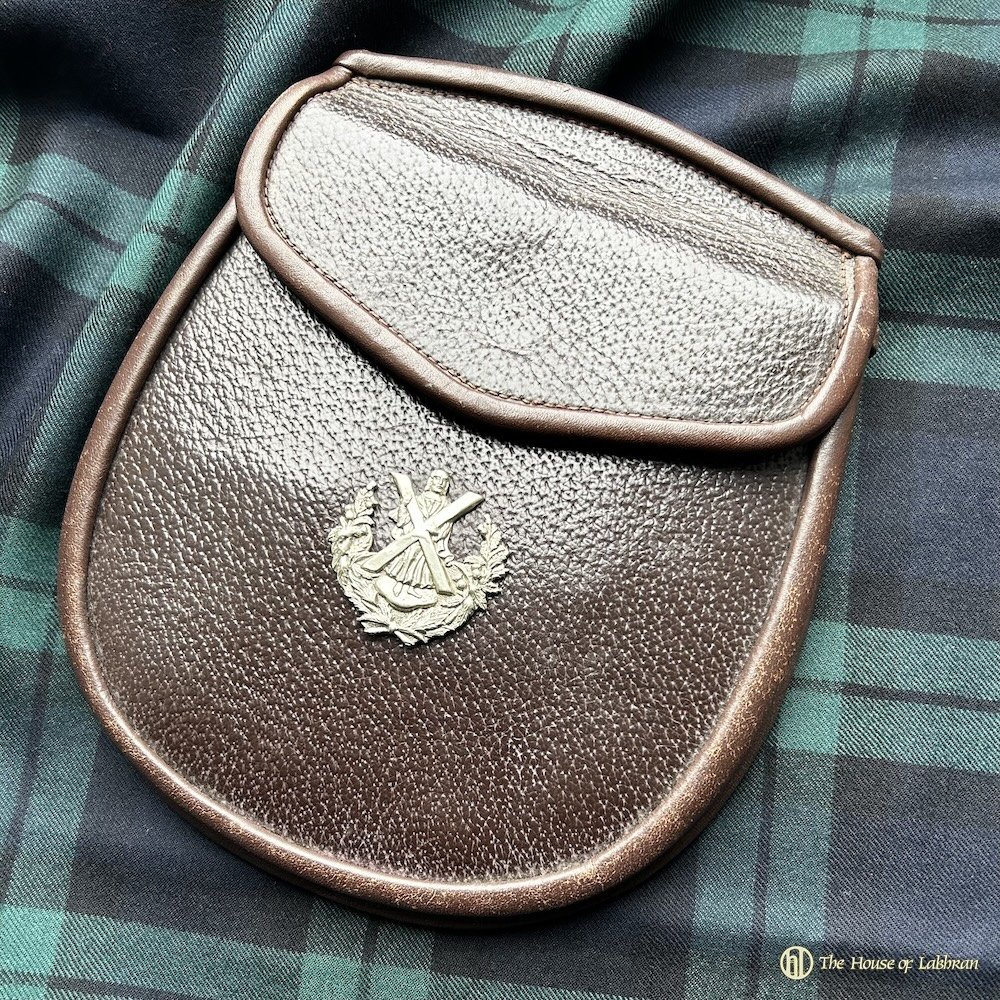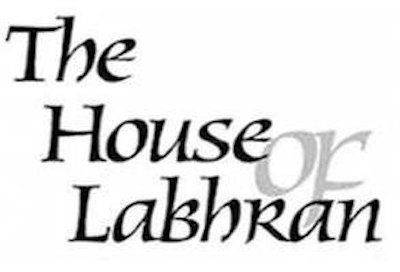Vintage Liverpool Scottish - Queen's Own Cameron Highlanders Leather Sporran


Vintage Liverpool Scottish - Queen's Own Cameron Highlanders Leather Sporran
Vintage Liverpool Scottish - Queen's Own Cameron Highlanders Leather Sporran
The sporran belonged to A. Vick who served with the Cameron Highlanders during WW2 and then the Liverpool Scottish. His son was Sir Graham Vick CBE an opera director who died in 2021.
It carries an interesting Cameron St Andrew badge and a broad arrow WD Ordnance mark with the printed number 124. A further broad arrow is stamped inside with the legend 'Remploy 1952'.
The St Andrew badge of the Queen's Own Cameron Highlanders (of which the Liverpool Scottish was a Territorial Army Battalion)
In good used vintage condition
Supplied with a new leather strap
The Liverpool Scottish - known as "the Scottish", was a unit of the British Army, part of the Army Reserve (formerly the Territorial Army), raised in 1900 as an infantry battalion of the King's (Liverpool Regiment). The Liverpool Scottish became affiliated to the Queen's Own Cameron Highlanders in the 1920s and formally transferred to the regiment in 1937 with its identity preserved. Reflecting the Territorial Army's decline in size since the late 1940s, the battalion was reduced to a company in 1967, then to a platoon of "A" (King's) Company, King's and Cheshire Regiment in 1999. In 2006, the company was incorporated into the 4th Battalion, Duke of Lancaster's Regiment (King's, Lancashire and Border).
Classic Sporran Style
Our range of fine quality Scottish sporrans are hand made in Scotland, including a range of traditional Jacobite style sporrans, dress sporrans and Victorian Highland Revival style goat hair sporrans.
All the skins, hair and furs used for making our sporrans are ethically sourced.
Sporrans for Gentlemen, Rebels and Rogues - Look to the past for inspiration, but never living in it.
The Black Watch Royal Highlanders
The Black Watch was raised in the wake of the 1715 Jacobite rebellion, when companies of trustworthy Highlanders were drawn from loyal clans comprising Campbells, Grants, Frasers and Munros. Six companies were then formed in 1725 and stationed in small detachments across the Highlands to prevent fighting between clans, to deter raiding and to help enforce laws against the carrying of weapons. In 1739 King George II authorised the raising of four additional companies to be formed into a "Regiment of the Line" of the regular army, with the Earl of Crawford as Colonel. The first mustering of the new Black Watch regiment took place near Aberfeldy the following year. The Black Watch name was derived from the dark colour of the tartan and the original role of the regiment to "watch" over the Highlands. In 1743 the regiment was ordered to march to London for inspection by the King. Due to a rumour that they were to be forced to serve in the West Indies rather than service in Scotland for which they had been enlisted, many of the men mutinied and decided to return home. Over a hundred were captured and returned to London, where they were tried by court martial and three of the leaders were condemned to be shot in the Tower. The remainder of the regiment proceeded to Flanders for action against the French. It remains for speculation whether the 1746 Rebellion could ever have taken place had the Black Watch been left to fulfil its original role of policing the Highlands.
Between 1745 and 1800 the Black Watch saw action in Fontenoy, the French-Indian War at Ticonderoga, Guadaloupe, Martinique, Havanna and the American War of Independence. The next 15 years saw action against the French in Egypt, the Peninsular War in Spain and Portugal and Napoleon's Waterloo campaign. During the later 1800s the regiment saw service in the Crimean War, the Indian Mutiny, conflicts in Africa and the Boer Wars. At the start of the 1st World War in 1914 there were 7 Black Watch Battalions and the regiment saw action in Mons, the Western Front, Mesopotamia and Palestine. During the 2nd World War the regiment saw action in Palestine, Somaliland, France, North Africa, Italy, North West Europe and Burma.
More recently the Black Watch served in Palestine, Hong Kong, Korea, Kenya, Northern Ireland, the Balkans and Iraq.
In recent years the Pipes and Drums of the Black Watch have carried out 11 tours in North America on behalf of Columbia Artists, some accompanied by the regiment's Military Band. A significant milestone in the history of the Black Watch Pipe Band was when 9 pipers from the Band played at the State Funeral of President John F Kennedy of the USA in November 1963, reflecting the impact which the Pipe Band had made in an earlier tour of the USA.
The regimental tunes are the quick march "Hielan Laddie" and the slow airs "My Home" and "Highland Cradle Song". Since 2006 the Black Watch regiment has been known as 3 SCOTS The Black Watch as part of the Royal Regiment of Scotland
Bespoke Hand Crafted & Vintage Scottish Sporrans. We have offer a range of new Scottish sporrans and much loved pre owned sporrans to complete your outfit or add to your collection. The stock range is ever changing with fine vintage sporrans from the 18th – 20th centuries. From original antique Jacobite sporrans from the 45 to Victorian and Edwardian sporrans.
Our range of new fine quality Scottish leather day sporrans are hand made in Scotland, including a range of traditional style sporrans and Scottish regimental.
Bespoke Sporran Design
We also offer a complete design and make service for sporrans and if you have a sporran you would like made as a special design please contact us. We would love to hear from you. We can incorporate a vintage cantle you may own or offer a range of new and vintage cantles. We would love to hear from you.
A Sporran is a pouch (Scottish Gaelic for ‘purse’). Now a decorative part of Highland dress, it was originally an everyday practical item. Made of leather or fur, it usually has more or less elaborate silver or other ornamentation, especially on the clasp or hanger. It is worn on a chain or belt around the waist, allowing the sporran to lie below the waist of the person wearing a kilt.
